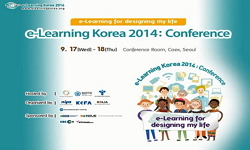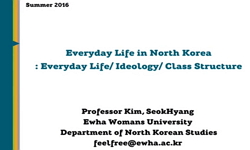La traduction en Corée est marquée par les Pyeonsa, des bonimenteurs chargés de filtrer par leur interprétation orale les idées venues de ce nouveau média exotique du 19e siècle. La colonisation japonaise puis le protectorat américain ont de m...
http://chineseinput.net/에서 pinyin(병음)방식으로 중국어를 변환할 수 있습니다.
변환된 중국어를 복사하여 사용하시면 됩니다.
- 中文 을 입력하시려면 zhongwen을 입력하시고 space를누르시면됩니다.
- 北京 을 입력하시려면 beijing을 입력하시고 space를 누르시면 됩니다.
https://www.riss.kr/link?id=A106850110
-
저자
앙트완코폴라 (성균관대학교)
- 발행기관
- 학술지명
- 권호사항
-
발행연도
2014
-
작성언어
French
-
주제어
Cinema ; Korea ; Ideology ; Cross-Cultural ; Translation ; Barkers ; Colonization ; cinéma ; Corée ; idéologie ; transculturel ; traduction ; bonimenteurs ; colonisation
-
등재정보
KCI등재후보
-
자료형태
학술저널
-
수록면
39-56(18쪽)
-
KCI 피인용횟수
0
- 제공처
-
0
상세조회 -
0
다운로드
부가정보
다국어 초록 (Multilingual Abstract)
La traduction en Corée est marquée par les Pyeonsa, des bonimenteurs chargés de filtrer par leur interprétation orale les idées venues de ce nouveau média exotique du 19e siècle. La colonisation japonaise puis le protectorat américain ont de même orienté les traductions. Les dictatures locales jusqu'aux années 1980 n'ont pas souhaité l'exportation des films coréens jusqu'à ce que ces derniers s'internationalisent d'eux-mêmes. Une nouvelle donne pour les traducteurs apparut au début des années 2000. Trois étapes se distinguent : Les Pyeonsa et les premiers traducteurs domestiquaient ou « exotisaient » les dialogues étrangers. Parallèlement, le souci permanent de l'image extérieure du pays a suscité une neutralisation-édulcoration du coréen exporté comme en attestent les retraductions successives. Les nouveaux dialogues internationalisés, plus aisément traduisibles, oscillent, actuellement, entre novlangue et esthétique intégrée dans une intertextualité trans-linguistique.
다국어 초록 (Multilingual Abstract)
The translation in the Korean Cinema is marked by the Pyeonsa, barkers (live storytellers) who used to filter by their oral interpretation the ideas from this new exotic media of the 19th century. The Japanese colonization then the American protectora...
The translation in the Korean Cinema is marked by the Pyeonsa, barkers (live storytellers) who used to filter by their oral interpretation the ideas from this new exotic media of the 19th century. The Japanese colonization then the American protectorate had also influenced the translations. The local dictatorships until 1980s did not wish to spread abroad the Korean movies until it became international by itself. A new situation for translators appeared at the beginning of the 2000s. So three steps can be distinguished: Pyeonsa and first translators balanced between domestication or foreignization. In parallel, the permanent concern of the outside image of the country aroused a “neutralization-bowdlerization” of the Korean dialogues translated as indicated by successive new translations. The new internationalized dialogues, more easily translatable, oscillate, nowadays, between novlangue and an integrated aesthetic into a translinguistic intertextuality.
동일학술지(권/호) 다른 논문
-
L’évaluation de la traduction littéraire, difficultés et enjeux
- 서울대학교 외국어교육연구소
- 최미경
- 2014
- KCI등재후보
-
Quand le Cameroun rencontre la Corée du Sud : traducteur interculturel
- 서울대학교 외국어교육연구소
- Sandrine TCHOUPOU TATSABONG
- 2014
- KCI등재후보
-
Aperçu historique des sociétés savantes de traductologie en Corée du Sud
- 서울대학교 외국어교육연구소
- 이영훈
- 2014
- KCI등재후보
-
La traduction des désignateurs de référents culturels coréens
- 서울대학교 외국어교육연구소
- 기욤장메르
- 2014
- KCI등재후보
분석정보
인용정보 인용지수 설명보기
학술지 이력
| 연월일 | 이력구분 | 이력상세 | 등재구분 |
|---|---|---|---|
| 2019 | 평가예정 | 신규평가 신청대상 (신규평가) | |
| 2018-12-01 | 평가 | 등재후보 탈락 (계속평가) | |
| 2017-01-01 | 평가 | 등재후보학술지 유지 (계속평가) |  |
| 2016-01-01 | 평가 | 등재후보학술지 유지 (계속평가) |  |
| 2015-01-01 | 평가 | 등재후보학술지 유지 (등재후보1차) |  |
| 2013-01-01 | 평가 | 등재후보 1차 PASS (등재후보1차) |  |
| 2011-01-01 | 평가 | 등재후보학술지 선정 (신규평가) |  |
학술지 인용정보
| 기준연도 | WOS-KCI 통합IF(2년) | KCIF(2년) | KCIF(3년) |
|---|---|---|---|
| 2016 | 0.31 | 0.31 | 0.2 |
| KCIF(4년) | KCIF(5년) | 중심성지수(3년) | 즉시성지수 |
| 0.17 | 0.23 | 0.655 | 0 |





 KCI
KCI






